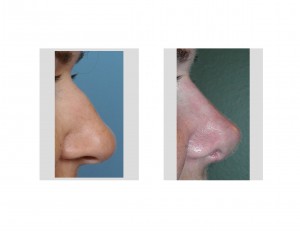Rhinoplasty is a unique plastic surgery, not in how it changes the shape of the nose, but on its potential impact on a patient’s psyche. Rhinoplasty has long been associated with patients who obsess over apparently very small nose issues and frequently request and pursue multiple revisional surgeries from different plastic surgeons. While changes in one’s face or body can evoke a variety of patient reactions, rhinoplasty disproportionately causes a greater amount of obsessive or perfectionist reactions.
Known as body dysmorphic disorder (BDD), this is a condition in which one has an unnatural and often unreasonable preoccupation with defects in appearance. Most of the time these defects are slight to even imaginary. Some patients with the disorder complain about body parts that most people would consider to be normal. Given that the outcome of a rhinoplasty involves a lot of different and interrelated parts to create the overall look, it is no surprise that BDD occurs most commonly with this plastic surgery operation.
In the August 2011 issue of Plastic and Reconstructive Surgery, a study out of Belgium reports that a significant number of people who complain about the size or shape of their noses show signs of this mental condition. This study was based on more than 200 patients who were evaluated for rhinoplasty over a nearly 1 ½ year period. During the initial consultation, the patients were given a psychological questionnaire to assess their potential symptoms of body dysmorphic disorder. They found that over 40% of patients had symptoms of BDD that were seeking to have cosmetic changes in their nose. Conversely, only a handful (2%) of patients seeking correction of a breathing problem exhibited symptoms of the disorder. Collectively, one-third of the studied rhinoplasty patients had signs of BDD.
This study shows a surprisingly higher number of BDD symptoms in rhinoplasty patients than previously thought. Previous studies have shown that about 10 percent of patients seeking plastic surgery suffer from the condition. But there is the influence of the makeup of the questionnaire and the study and culture of the patient population being evaluated. It is also relevant that these were primary rhinoplasty patients. Patients seeking revisional rhinoplasty may or may not have a higher incidence of BDD.

But it is very hard to pick up BDD symptoms in a primary rhinoplasty consultation. That discovery all too often is not made until afterwards. But despite this study’s findings, my own practice experiences do not show the potential numbers of rhinoplasty patients with BDD that are remotely that high. While I have never done a consultation questionnaire, the percent of rhinoplasty patients unhappy with their results is a ‘hard’ test after the fact…anda hard one to miss.
The risk of rhinoplasty and subsequent unhappiness in a patient with BDD escalates considerably in revisional surgery, particularly when you did not do the primary surgery. A knowingly unhappy patient upfront has a very diminished ability to be happy afterward. Fortunately, these patients are easier to pick up than primary rhinoplasty patients with BDD. They describe in great detail the anguish of their prior surgerie(s), how it has disturbed their everyday life, and have pictures or drawings as to what is wrong or what needs to be done. They spend a great deal of time with a mirror in their hand pointing out the flaws of the prior surgery during the consultation. This does not mean that a good surgical outcome can not be obtained, but the percentage of doing so drops precipitously.
Dr. Barry Eppley
Indianapolis, Indiana


